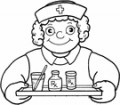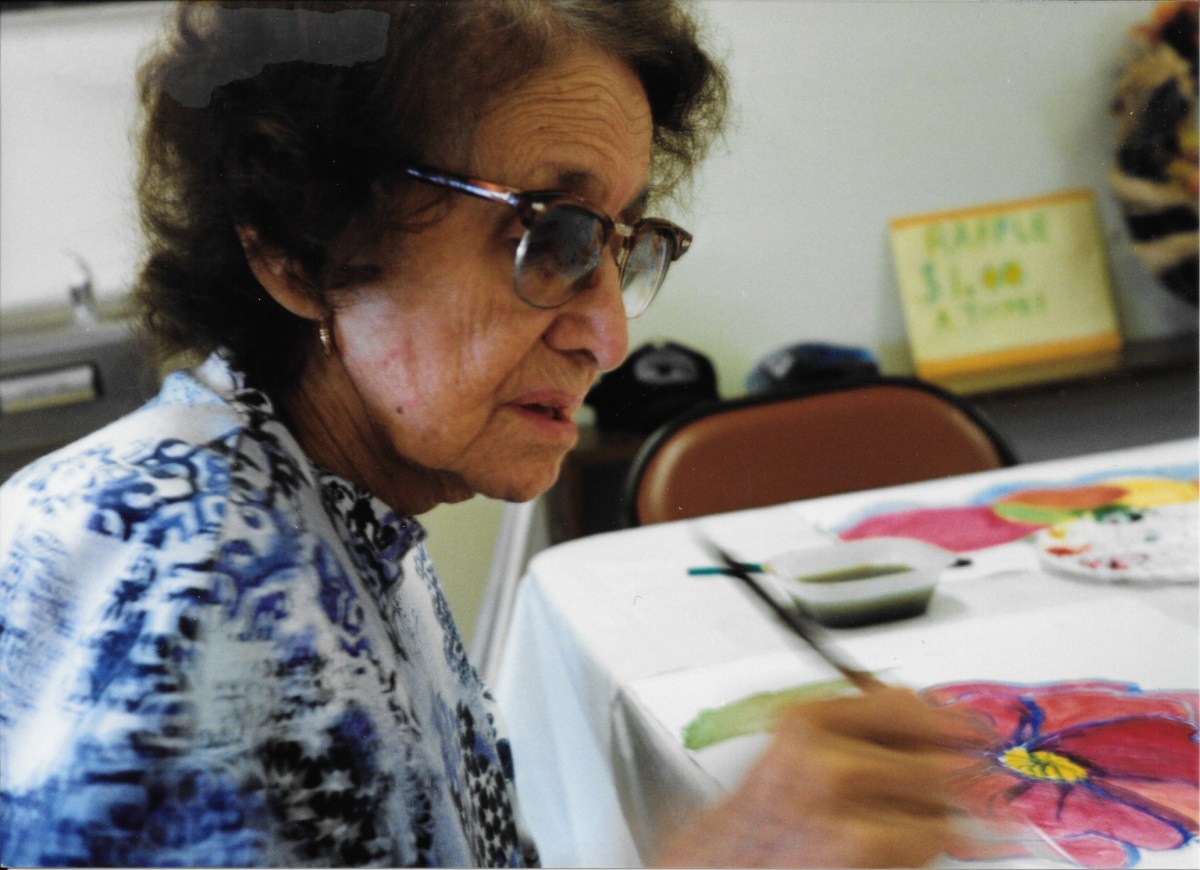Effective Plans of Addressing Depression Among the Elderly Patient in Nursing Homes
Abstract
With the rising number of the depression of the older population in the nursing homes, there is a need for the nurses to look into the effective ways that would assist in solving the above problem. A concerned nurse should come up with a well-elaborated plan that would significantly identify and treat the depressive patients. The paper introduces the depression in the elderly patient living in the nursing homes and goes further to highlight the key areas that it intends to discuss. It provides a clear outline of the plan that can be used by a nurse in effectively solving the depression challenge. The paper also notifies what needs to be taken into consideration before starting implementing the plan, as such ensures the success of the entire process. The assessment plan will assist the nurse to have a clear understanding of the patient emotional status, level of pain and problems caused by depression. The paper further explains the screening process and its importance in resolving the problem. It also elaborates circumstance in which the antidepressant drug, therapies and interventions practices should be applied. This provides a nurse with rich knowledge in offering the effective treatment to the depressed patient. It conclude by pointing out that if a positive outcome is not ascertained then a nurse need to recheck on the initial plan and goals; this helps in knowing areas that led to its failure.
Introduction
Depression among the elderly population is increasingly becoming a matter of great concern across the globe. A country such as the United States of America is currently hosting over one million aging Americans in the nursing homes. In spite of the major improvement made in the nursing homes, the aging population has continued to view them as a representation of the end of the road and further loss of their independence leading to depression. The loneliness and loss of the family attachment have also played a significant role in increasing the depression in the nursing homes. According to the findings of the Drageset et al. (2015), the depression in the nursing homes has soared to between 34 to 41% in America. This high percentage is alarming and calls for the gnawing need of addressing the problem. Lack of paying attention to the needs of the older population in the nursing setting coupled with inadequate knowledge on the symptom of depression has made it possible for the ailment to remain undetected. The nurses, therefore, need to come up with a well-defined and elaborate plan for solving the rising depression of the elderly group in the nursing homes. The paper seeks to provide an in-depth plan on how the assessment, screening, knowing the history of the patient, application of medical drugs and therapies can assist in reducing and treating of the depression among older patients in the nursing home.
The proposed Plan for solving the Problem
Assessment of the patient
Screening of the patient
Knowing the history of the patient
Application of the medical drugs
Application of the therapies and other interventions
Elimination of barriers to the identification of the Depression
It is essential for the nurses first to exterminate the barriers that would impede the identification of the depression before carrying out the implementation of the plan. Notably, there are two significant barriers that interfere with the identification of the ailment. Patient barriers occur when the older patient is unlikely to volunteer in providing the depressive symptoms. Reasonably, such a patient perceive depression a moral default or weaknesses but not as an illness and may fear opening up for assistance (Glover & Srinivasan, 2017). In this case, the nurse has a role in educating the patient on the importance of sharing their problems, and to sensitize them that depression is an ailment that needs to be cured but not a moral weakness. Secondly, provider barrier can be attributed to the nurse attitude and experience. When the nurse assume that the depression is a natural consequence of aging, he/she may miss on detecting depression. Also, lack of knowledge and skills on the symptoms of depression may inhibit the chances of detecting depression (Glover & Srinivasan, 2017). In resolving this challenge, the nurse should not work on assumption and must empower themselves with the correct knowledge of the symptoms of depression. Success in eliminating the barriers mentioned above would assist the nurse to easily identify older patients that are at the risk of suffering from the depression.
Assessment Plan
The success of the assessment process begins the ability of the nurses to have a clear understanding and ability to discern depression symptoms and to differentiate them with those of the mild cognitive impairment, delirium, and dementia. The nurses that is not be acquainted with the right knowledge of depression symptoms should ensure that he/she carries out familiarity research before engaging in the assessment process. During the above process, the nurse who intends to resolve the depression problem among the elderly group should carry out a one-on-one interview with the patient. He/she should ask the patient the history of the depression and recent symptoms (Frank, 2014). Also, the nurse must delve deep in detecting the express mood of the patient and if he/she is suffering from any pain. Notably, effective communication between the nurse and patient is crucial for success in the assessment process (Drageset et al., 2015). Importantly, nurses may utilize the self-assessment tools that aim at allowing the discussed group to identify issues that patient view as a problem (Glover & Srinivasan, 2017). After conducting the assessment plan, the nurses should carry go further in carrying out screening to those that indicated symptoms of depression.
Screening Plan
Another essential plan to assist the nurses in addressing the depression in the elderly group is to conduct a screening process that would play a critical role in identifying the level of depression. The screen tools can provide a clear picture on the degree of the depression, and this assists the nurse in knowing how to handle depressed patients and also helping them to examine if a person has improved following the efficient administration of the interventions meant solve the problem (Glover & Srinivasan, 2017). Important to note is that these tools use rating scales which makes them valid and reliable. Therefore, nurses to be involved in the screening of the depression must be trained with the aim of knowing how to use and read the screening tools. Prevalently, in addressing the challenged facing the mentioned group of patients, Geriatric Depression Scale abbreviated as GDS would be used to identify the patients at risk of depression because of its simplicity. During the screening process, the nurse should educate the patient of the need of proving truthful and unbiased information to allow the tool to provide the level of depression (Glover & Srinivasan, 2017). After the screening process, the nurses would ascertain those who are suffering from the depression.
Identification of the Root cause of Depression
After the identification of the patients suffering from the depression through the screening process, there is an essential need to identify the root cause of the depression. Lack of conducting this process would lead to the negative outcome of the failure of addressing the problem. Additionally, depression can be attributed to either biological or psychological and if a nurse knows the cause of depression, he/she can be in a position of providing the best medication or therapy (Glover & Srinivasan, 2017). For instance, those suffering from biological factors such as brain changes leading to vascular depression can be easily treated by medication in comparison to therapy. Notably, therapy may not be suitable for the treatment of the chemical imbalance. It is therefore important for nurses to sit down with the patients so that they are asked about what they think could have resulted in the depression (Frank, 2014). Notably, in doing so, the nurse can apply one of the QSEN competencies such as collaborate with the family members to assist in proving any meaningful information.
Application of the Medical Treatment
Although the nurses may not be directly involved in the provision of the medical treatment they need to have an understanding of the antidepressant drugs, for instance, when they should be administered, the period that the patient should take to show a positive response to the drug and the right dose. The mentioned knowledge plays a significant role in assisting the nurses in supervision or monitoring the effectiveness of the indicated drugs. Importantly, if the nurse had identified that the cause of the depression during the assessment was biological, then he/she must share this information with the physician to assist him/her in coming up with the best treatment for the depression (Drageset et al., 2015). Also, during the issuance of these drugs, the nurses must ensure that they provide correct dose and should eliminate chances of patients misusing or abusing the drugs. Close monitoring of the progress made by patients should be keenly taking into account by the nurse in charge and if the condition worsens or no significant change observed then he/she should report the matter to the physician. Notably, antidepressants usually take at least 14 days to have a beneficial effect (Glover & Srinivasan, 2017). Reasonably, a success in the medical treatment plan requires teamwork and collaboration between the physician and the nurse.
The Application of Therapies and other Healthy Practices
A point to note is that if the nurse affirmed that the primary cause of the depression is psychological, then he/she can specifically involve in the provision of therapies that can assist in addressing the problem. It is important to point out that during the therapy, the nurse has to collaborate with family members in ensuring the success of the process. However, the role of the family will only be limited to observation and may contribute only if asked to do so by the nurse. Notably, the presence of the family members may play a positive role in making the therapy process to be more effective. In an effort to reduce the depression caused by the environmental factors, the nurse would apply behavioral activity therapy that aims at increasing the pleasant events in the nursing home (Glover & Srinivasan, 2017). The nurse must get the rid of any object that a patient feels to be causing discomfort. Conversely, if negative self-worth leading to stress has caused the patient depression, the nurse can apply reminiscence therapies in the sense that the patient is encouraged to share the past life and using the old memory in solving the current problem. Besides, the use of the music therapies would use the emotional, psychological and physiological effects of music to treat the depression. Also, the nurse can also engage the patient in other interventions such as exercising and social interaction (Frank, 2014).
The Expected Outcome
For an effective plan, the nurse, need to come up with short-term goal-oriented results to assist him/her to know the patient adherence to the outlined plan. After the application of the medical test and therapies, a goal with a reasonable time of the frame of should be set. In this case, after 30 days, the patient should show a positive outcome. Another goal is the training on the efficient use of the screening tools before the start of the screening process; this goal should be set within a week to allow the timely commencement of the process of solving the depression problem. In meeting the above goals, I would specifically ensure that the correct dose of drugs is issued to the patients and strictly involved myself in the therapy process without delegating it to others. Besides, I will acquaint myself with knowledge of the use of the screening tools by practically learning on how to use the tools. Notably, if the patient start indicating confident facial expression, active in social interaction and showing a low score on the GDS is an indication that the plan has worked. However, if the patient show no meaning improvement need to recheck on the initial plan and goals; this helps in knowing areas that led to its failure.
References
Drageset, J., Dysvik, E., Espehaug, B., Natvig, G. K., & Furnes, B. (2015). Suffering and mental health among older people living in nursing homes—a mixed-methods study. PeerJ, 3, e1120.
Glover, J. A., & Srinivasan, S. (2017). Assessment and treatment of late-life depression. JCOM, 24(3).
Frank, C. (2014). Pharmacologic treatment of depression in the elderly. Canadian Family Physician, 60(2), 121-126.
This content is accurate and true to the best of the author’s knowledge and is not meant to substitute for formal and individualized advice from a qualified professional.








